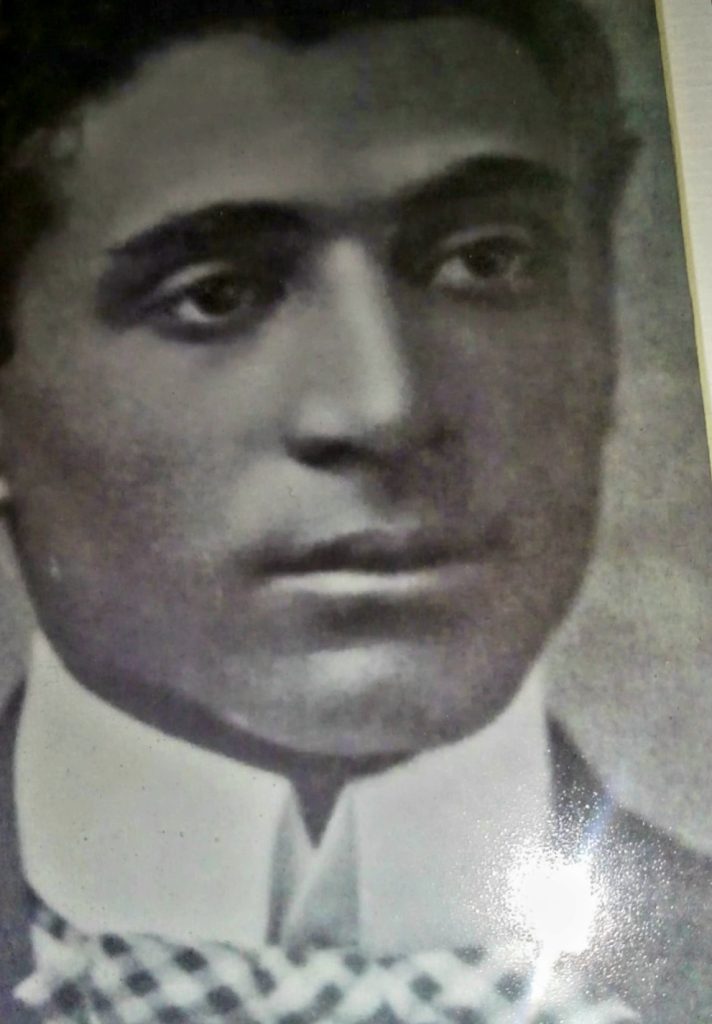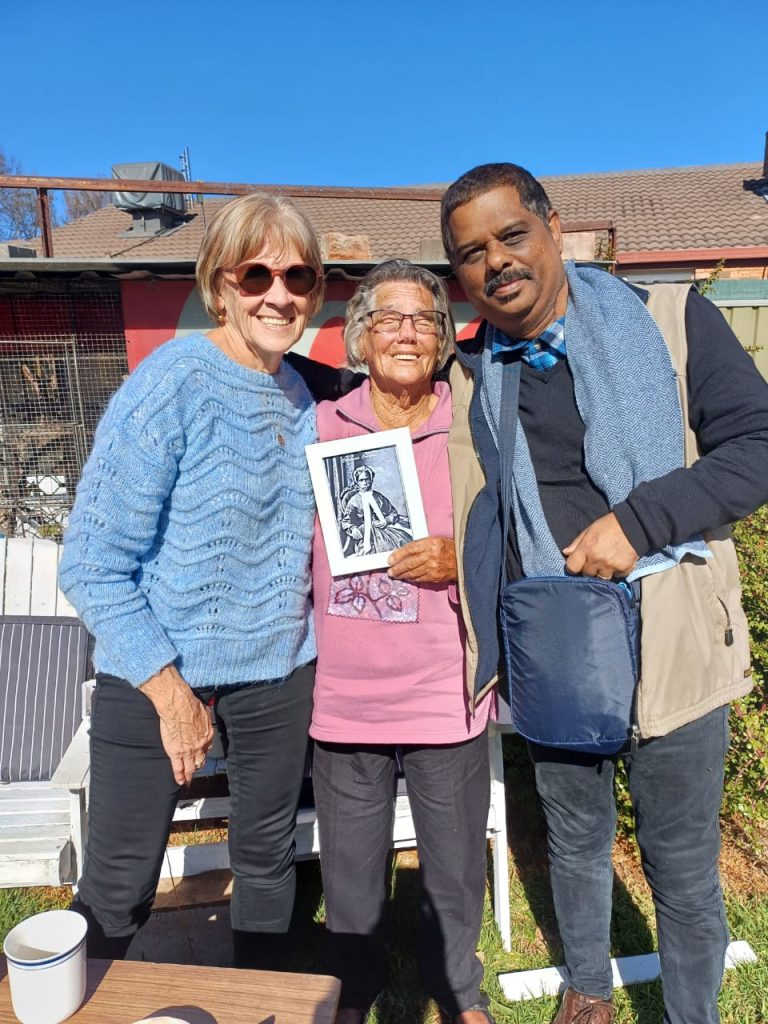In a former blog, I wrote about the enslaved girl Constance Couronne, who in 1834 with her cousin Elizabeth Verloppe was transported from the Indian Ocean island of Mauritius to the penal colony of New South Wales. The two children had been convicted of attempting to poison their mistress. Constance lived a long life; she married and had children, and today there are many thousands of descendants living in Australia.
My research on Constance is part of a larger piece of work that is exploring histories of descent and descendants among the small minority of African, Asian, and Creole (mixed heritage) convicts who were transported to Australia from British colonies, including the principal sending location of Mauritius but also Barbados, Jamaica, and other sites in the Caribbean and elsewhere in the British Empire. The existence of these convicts in the Australian colonies is very well known, as is the fact that African, Asian, and Creole convicts were convicted in and transported from Britain (which was more multi-cultural in the 18th and 19th centuries than is commonly appreciated). Black convicts were embarked on the First Fleet in 1787, and today many descendants of these early arrivals are fully aware of their African heritage.
During our project, we have interviewed some of these First Fleet descendants – and almost twenty other people who have such “colonial” heritage. In some cases, people have always been aware of their convict history, in others they have found out about it during their genealogical research. The stories they have told us are fascinating, and our discussions on family history have included issues such as the ways in which oral narratives have passed down in families (or not), secrets and silences, the challenges of archival research, and genetic ancestry testing. This coincides very much with the work of other historians and sociologists who have worked with genealogists. But our project takes a different direction to this work in that we engage squarely with issues of race and racialization in convict societies and since.
Me and two academic researchers at Leicester – my colleague on this project Lorraine Paterson and honorary fellow, scholar of Russian penal colonies and genealogy whizz Carrie Crockett – decided that we would like to experiment with co-authoring a piece for an academic journal in partnership with some of the wonderful family historians that we have got to know. Our interactions with them have included interviews (sometimes more than one), and informal meetings, and email correspondence. We settled on three people: Nicolas Couronne, who shares a surname with Constance and enthusiastically researches the history of enslavement from his home in Mauritius; the well-known Melbourne-based writer Tony Birch, who is descended from Barbados convict Prince Moodie/Moody, Indigenous peoples, and South Asian immigrants and holds the Boisbouvier Chair in Australian Literature at the University of Melbourne; and Sharon Cox, whose ancestor was another Barbados convict, Robert James, and who holds bachelors degrees in Arts and Business and is currently completing a diploma in Family History at the University of Tasmania. I and/ or Lorraine had met all of them face-to-face. Another colleague at Leicester, geneticist Mark Jobling, assisted us greatly in understanding genetic ancestry testing (including how it has changed over the past 20 years).
We came up with a “roundtable” format, where we collectively took time to come up with a set of questions that we worked through in turn. I started by writing the introduction (the historical context to the discussion) and we then passed the questions and text around, everybody adding their thoughts, circulating it several times until we each felt that we had been able to express our perspectives. I oversaw the editing (mainly to ensure flow) and the insertion of academic footnotes. Whilst the academic team had worked through an extensive secondary literature, the family historians had worked largely on the relevant archival material that exists in the public domain, some of which is online. We had looked at this material too, sourcing these textual records independently of one another prior to our collaboration. Tony Birch and Sharon Cox also shared with us materials such as family photographs that are not otherwise available.
Robert James’ descendant William Henry Harbuckle, c. 1902. (Photograph held in the private collection of Sharon Cox)

Our discussion has now been published, open access, in the academic journal Family and Community History. You can read it here.
In the piece, we introduce the history of “colonial” convict transportation, going on to explore some of the challenges of archival research in former slave colonies specifically. The great irony of convict transportation, as many people have noted, is that it produced a large body of historical records on ordinary plebeian people. In terms of the lives of enslaved or formerly enslaved convicts, this means that whilst it is hard to write about descent and descendants among enslaved people in general (including the left-behind families of Constance [as Nicolas Couronne makes clear], Prince Moodie/ Moody, and Robert James), it is possible to write histories of the descendants of those enslaved or formerly enslaved persons sentenced to transportation to the Australian penal colonies. Notably, as well as convict-era records, civil records, and digitised newspaper reports there exist photographs of three formerly enslaved people who were sent to New South Wales and Van Diemen’s Land (two for Mauritius and one for Barbados), and these are quite unlike anything that exists in either country today. There are also photographs of descendants, kept within families, and our co-authors told us that these were hugely important to them in making sense of their history and identity.
Nicolas Couronne visited Australia as our publication went to press, working in the archives, visiting places associated with her life, and meeting Constance Couronne’s descendants. Gloria Provost and Lola Jacobs are pictured here.

Additionally, as our research has shown and as other scholars have recognised for white British and Irish convicts, African, Asian, and Creole convicts often reinvented themselves following their transportation – and after they were released or pardoned. Lorraine Paterson proposes that we can make sense of the passed-down family narratives that we have heard – of descent from Indigenous Americans and Indian princesses – by thinking about convicts’ creation of the archive. She puts forward the concept of “critical archival fabulation” to capture this. Certainly, as we learned in our “roundtable” discussions, such reinventions have continued over the years among descendants, in ways that have intersected with larger social, cultural, and political contexts. In this regard, our discussion also covers what our co-authors told us about intergenerational stigma and trauma. Tony Birch and Sharon Cox reveal especially how their forebears got caught up in the racial politics that came in the aftermath of the “White Australia” policy, including the era of the “stolen generations” and the conundrum of establishing Indigenous heritage that followed. Tony Birch’s family stands out as especially cosmopolitan – and this would also be the case if we looked at Constance Couronne’s family tree (and those of other black convicts) from various vantage points. As Lorraine Paterson reminds us, family trees always show the view from one descendant perspective. This comes through strongly when we consider genetic ancestry testing, and the way in which it gives insights into the origins of both individuals and population groups.
Overall, this collaborative writing has helped us to make meaning of the lives of enslaved and formerly enslaved peoples who underwent sentences of penal transportation, and the ways in which race may have mattered intergenerationally. Asians, Africans, and Creoles were a small minority of the convict population, and remain so amongst descendant groups, but together we show that a close study of their experiences can give us insights into negotiations of history and identity. We hope that this brings a richness and equity to academic, family, and community research.
Clare Anderson